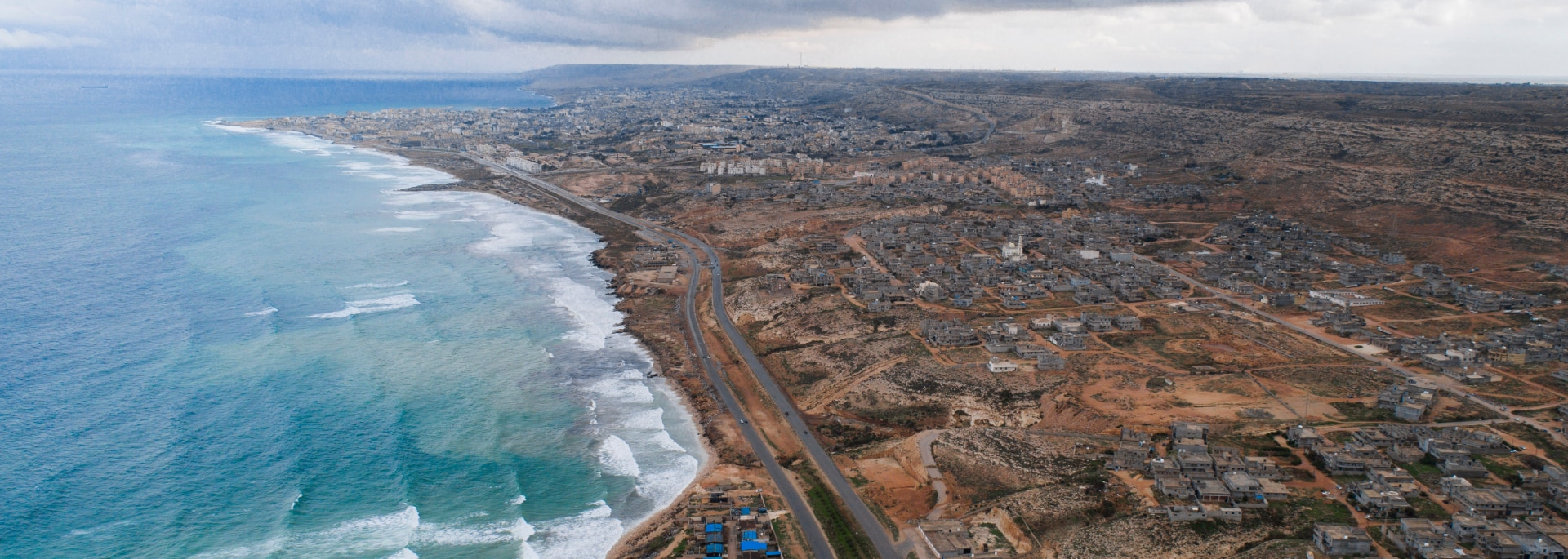


Dannieh was previously mentioned in Pharaonic manuscripts and the Torah. In fact, the historical ruins found there demonstrate the passage of several cultures in the region such as the Phoenician ruins found in the area, in addition to archeological sites which are found almost everywhere in the area.
The history of Dannieh holds several determinants of its actual situation from the Mamluk and the Ottoman eras as they shaped its geographic boundaries, demographic composition, administrative linkage to Tripoli and other economic characteristics of the area.
Dannieh is a region in North Lebanon extending from the Mediterranean sea to the highest mountains in the Middle East on a 365 km2 area; 172,000 recorded inhabitants (70% permanent residents)*, not counting the Syrian refugees, estimated at 60,000 and constantly increasing. The population is grouped in about 80 communities, mostly villages, the 27 largest have the status of municipalities. 23 of them were grouped since December 2004 in the Union of Dannieh Municipalities that was granted by the state economic development functions and land management under the authority of the president “Mohamed SAADIEH” who was elected by his peers.
Dannieh falls within the boundaries of the Minieh-Dannieh qaza and was attached to Tripoli in what was previously known as the “Tripoli villages”. This qaza has common boundaries with five different qazas, it is surrounded by Akkar in the North, Hermel in the East, Bsharreh and Zgharta in the South, and Tripoli in the South-West. It is one of the few Lebanese regions which neighbor so many others.
The mountainous zone extends over the length of the common boundary with the qazas of Hermel and Bsharreh, and Zgharta and covers the slopes of Mount Makmel which includes the highest peak in Lebanon “Qornet Al Saouda”. The region is mostly mountainous and snowy during winter.
The religious diversity of its villages and towns, and the fact that it hosts the most important summer destination towns in the area, namely Sir, Bakhaaoun, Aassoun, Sfireh and Bqaasafrine makes of the Dannieh region an attracting destination. Tourism movement in this region is very active due to the water falls, natural reserves, mountains and virgin forests. Many natural sites such as Al Zahlan grotto Al Bir grotto, Al Hamam valley, as well as the famous “Oyoun Al Samak Lake” represent a powerful tourist attraction.
During summer it is a destination for the Lebanese citizens who discover tourism, hiking, in addition to the cold and healthy air. Most of the visitors’ mobility happens during the night with a purpose of spending the evenings in the mild weather provided by the region. Hotels, restaurants, and cafés are an added value.
The region is characterized by an abundance of water, irrigated crops, in particular fruit trees such as apple, peach, apricot, plum, pear, and cherry, as well as number of agro-food activities such as beekeeping and the manufacturing of honey and wax prevail in the region, it also embraces a number of important natural sites, including the cedars forest of Dannieh, Mrebbine’s forest which contains around 7,000 trees of more than 500 different species, and the forest of Jurd En Njas which contains around 500 cedar trees.
Subscriu-te al nostre butlletí mensual per rebre totes les notícies.

Nam porttitor blandit accumsan. Ut vel dictum sem, a pretium dui. In malesuada enim in dolor euismod
Nam porttitor blandit accumsan. Ut vel dictum sem, a pretium dui. In malesuada enim in dolor euismod

Nam porttitor blandit accumsan. Ut vel dictum sem, a pretium dui. In malesuada enim in dolor euismod

Nam porttitor blandit accumsan. Ut vel dictum sem, a pretium dui. In malesuada enim in dolor euismod
Nam porttitor blandit accumsan. Ut vel dictum sem, a pretium dui. In malesuada enim in dolor euismod

Nam porttitor blandit accumsan. Ut vel dictum sem, a pretium dui. In malesuada enim in dolor euismod

Nam porttitor blandit accumsan. Ut vel dictum sem, a pretium dui. In malesuada enim in dolor euismod
Nam porttitor blandit accumsan. Ut vel dictum sem, a pretium dui. In malesuada enim in dolor euismod

Nam porttitor blandit accumsan. Ut vel dictum sem, a pretium dui. In malesuada enim in dolor euismod

Nam porttitor blandit accumsan. Ut vel dictum sem, a pretium dui. In malesuada enim in dolor euismod
Nam porttitor blandit accumsan. Ut vel dictum sem, a pretium dui. In malesuada enim in dolor euismod

Nam porttitor blandit accumsan. Ut vel dictum sem, a pretium dui. In malesuada enim in dolor euismod
| Galeta | Durada | Descripció |
|---|---|---|
| cookielawinfo-checbox-analytics | 11 months | Aquesta galeta l'estableix el connector de consentiment de galetes de GDPR. La cookie s'utilitza per emmagatzemar el consentiment de l'usuari per a les cookies de la categoria "Analítica". |
| cookielawinfo-checbox-functional | 11 months | La cookie s'estableix pel consentiment de la cookie GDPR per registrar el consentiment de l'usuari per a les cookies a la categoria "Funcionals". |
| cookielawinfo-checbox-others | 11 months | Aquesta galeta l'estableix el connector de consentiment de galetes de GDPR. La cookie s'utilitza per emmagatzemar el consentiment de l'usuari per a les cookies de la categoria "Altres. |
| cookielawinfo-checkbox-necessary | 11 months | Aquesta galeta l'estableix el connector de consentiment de galetes de GDPR. Les cookies s'utilitzen per emmagatzemar el consentiment de l'usuari per a les cookies de la categoria "Necessàries". |
| cookielawinfo-checkbox-performance | 11 months | Aquesta galeta l'estableix el connector de consentiment de galetes de GDPR. La cookie s'utilitza per emmagatzemar el consentiment de l'usuari per a les cookies de la categoria "Rendiment". |
| viewed_cookie_policy | 11 months | La galeta la configura el connector de consentiment de galetes GDPR i s'utilitza per emmagatzemar si l'usuari ha consentit o no l'ús de galetes. No emmagatzema cap dada personal. |